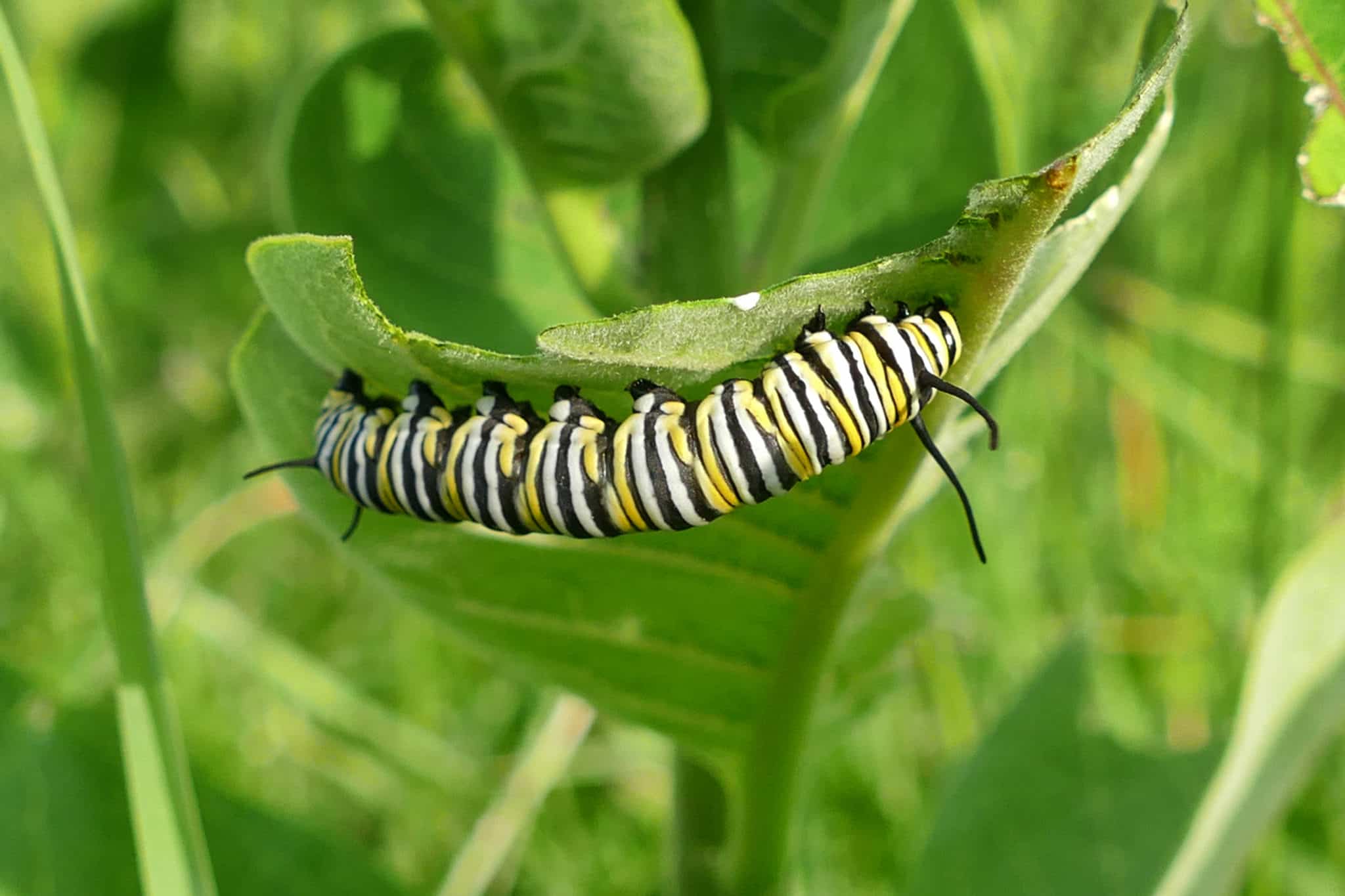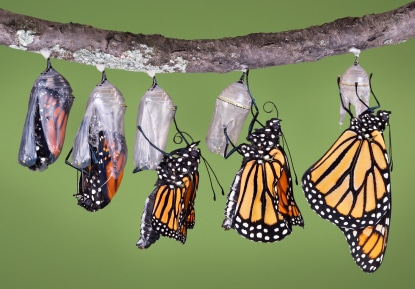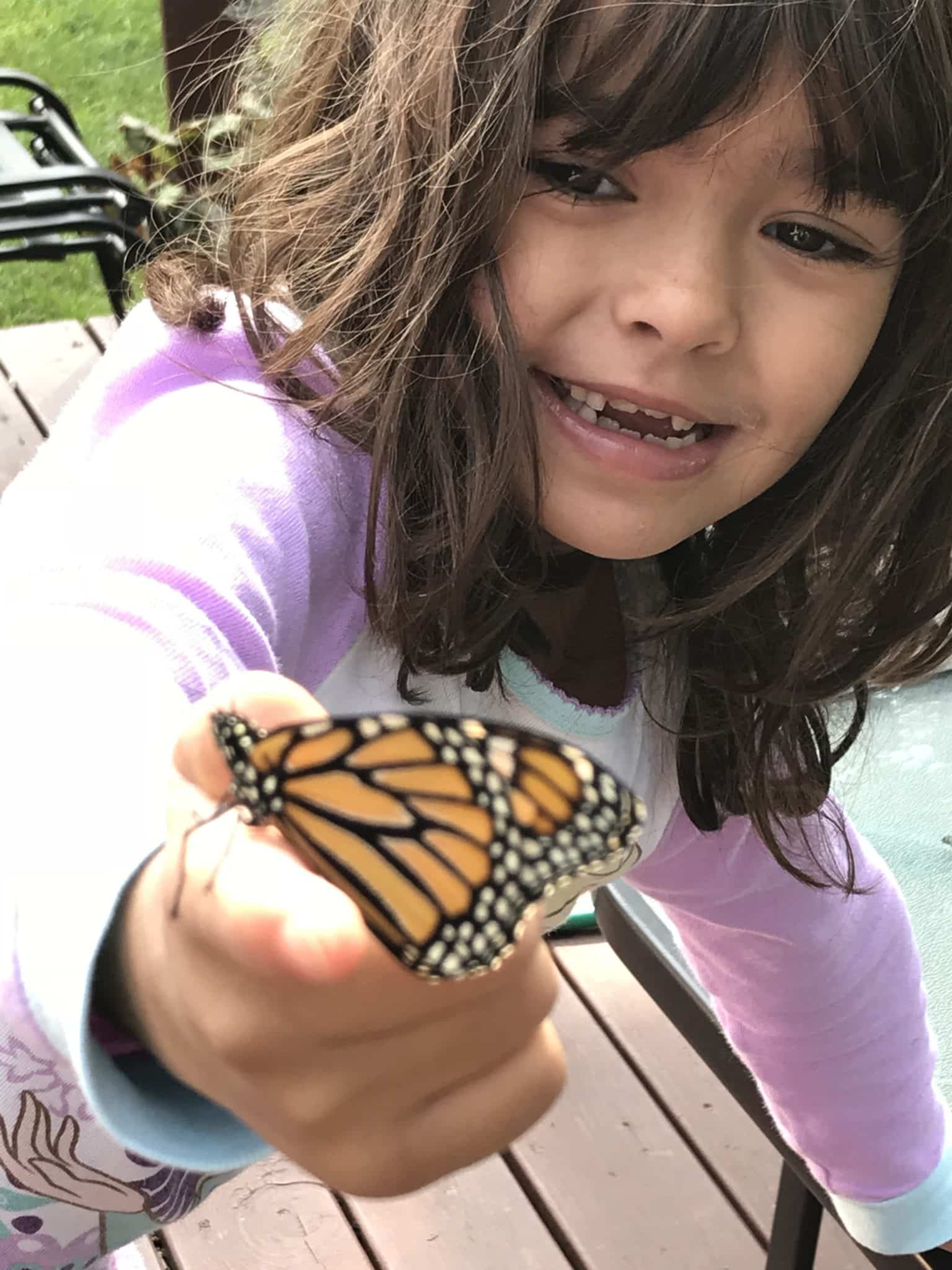
By Laurel Blomquist and Kelly Krause
Part One: Planting Milkweed & Pollinator Habitat
By Laurel Blomquist | Last fall, we were fortunate that our neighbor, Jill from Tall Pines Conservancy, reached out to us with a treasure trove of mature milkweed pods. We overwintered them in our greenhouse, and in the spring, Ryan burned off the cottony part of the seed and they were ready to plant. We planted a few hundred seeds in the greenhouse, but only about 20 seeds germinated. 
If you are interested in starting your own milkweed plants from seed, I would suggest looking at the Xerces Society’s Milkweed Seed Finder. The Xerces Society is dedicated to invertebrate conservation in North America and offers several books on the subject of raising backyard pollinator gardens, both for homeowners and commercial farmers.
At Gwenyn Hill Farm, we have several areas dedicated to pollinator habitat. The easiest to observe is in the vegetable garden. As part of the CSA program, we have a cutting flower garden that includes several species that are attractive to pollinators. Last year, members remarked that our flower garden contained more butterflies than the Lapham Peak butterfly garden that they had visited.
We also have several strips of land planted into native prairie species, such as asters, coneflowers, sage, sunflowers, clovers, yarrow, goldenrod, black-eyed susans, wild lupine, and seasonal grasses, and we will scatter the rest of our milkweed seeds there to join the crowd. One of these strips is on Bryn Drive, running alongside the vegetable garden. We will be seeding several larger blocks in early summer.
Native pollinators are crucial to vegetable production. Many fruits that we think of as vegetables need pollination to produce. These include: tomatoes, peppers, eggplant, melons, watermelons, cucumbers, summer squash, winter squash, okra, peas, and beans. Of course, berries and tree fruits such as apples and pears also need pollinators in order to fruit.
One of our CSA members decided to take matters into her own hands and raised quite a few monarch butterflies last year. Through her experience, you will see that raising monarchs is an easy and fulfilling project, one that makes a difference that will have “the butterfly effect.”
Part II: My Experience Raising Monarch Butterflies
By Kelly Krause | As with most of my projects, raising monarch butterflies was an impulse. My journey started 2 years ago, when I purchased butterfly houses for my mother and mother-in-law for Mother’s Day. Then I went online to research what kind of plants attract butterflies. According to the website, Monarch Butterflies will only lay their eggs on milkweed. The eggs hatch into caterpillars and only eat milkweed.

The website cautioned anyone buying milkweed to make sure that it did not have any type of pesticide or herbicides sprayed on it from the nursery. The website suggested going to a farmer’s market or a local organic nursery. The milkweed stores the pesticides or herbicides in its leaves and these chemicals kill the caterpillars. The chemicals also play havoc with the milkweed plant itself. The increased use of Roundup has decimated milkweed over the last couple of decades, thus greatly reducing the population of monarchs.
With this in mind, last summer, my daughter and I observed monarchs visiting our milkweed plants. We observed a couple of small

caterpillars. One afternoon, we took a crash course in butterflies. We watched a couple of YouTube videos by “MrLundScience”. His videos propelled us into raising butterflies. We would look for eggs and raise them to butterflies. Their whole lifespan with us lasted about 2 weeks.
It was an inexpensive project. We used a 10-gallon aquarium and released them from our back deck. Last summer, we raised and released 37 butterflies. The best butterfly advice I have received was from a Facebook post. The women wrote, “Don’t count how many butterflies you release, instead count how much fun you have had watching the magical transformation.”
Kelly Krause is a Founding Member of Gwenyn Hill Farm’s CSA. Laurel Blomquist is Gwenyn Hill Farm’s Head Gardener.

